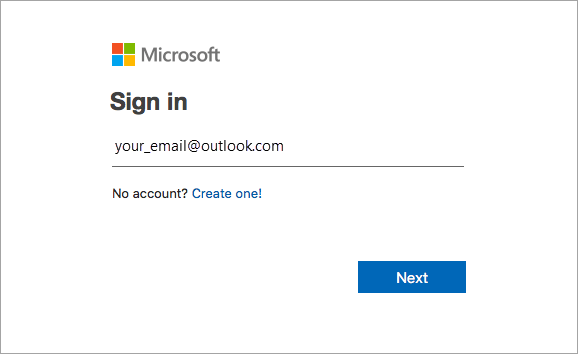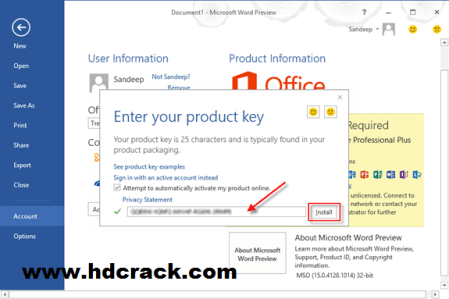

- #Office 365 for mac keeps asking for product key license#
- #Office 365 for mac keeps asking for product key windows#
#Office 365 for mac keeps asking for product key windows#
If Windows is pre-installed on a computer by an original equipment manufacturer (OEM), the operating system is automatically activated without the need for interaction from the user. Businesses using this licensing system have the option of using Microsoft's activation servers or creating and managing their own.
#Office 365 for mac keeps asking for product key license#
Programs purchased under this license must still be activated, with the exception of Windows XP and all versions of Office released prior to Office 2010. Ĭertain versions of Windows and Office are available under a volume license, where a single product key is used for multiple installations. Throughout this grace period, the user will be periodically reminded to activate the program, with warnings becoming more frequent over time. Immediate activation is not required following installation, but the program must be activated within a specific period of time in order to continue to function properly. Still need help? Go to Microsoft Community.When installing a retail copy of Windows or Office, the user is asked to input a unique product key supplied on a certificate of authenticity included with the program, which is later verified during activation. If restarting the computer does not resolve the issue, then adjusting the registry is the recommended solution. Doing this makes sure that a clean state is present when the other user tries to sign in again. To fix this scenario, the signed-in user should sign out of Office 2013, and then restart his or her computer. That is, if the first user doesn't have access to a document that the second user has access to, and the second user (who believes they are signed in) attempts to open that document, the document will not open because Office tries to open the document as the first user. All Office 365 content that he or she tries to open will be performed by using the first user's credentials.īe aware that Office 2013 respects the permissions of all documents and SharePoint Online libraries. In this case, the second user cannot access his or her own content. However, there may be cases in which this scenario is not detected and the Office 2013 user interface may show that another user is successfully signed in. Office 2013 makes a best effort to prevent a second user from signing in when another user from the same organization is already signed in. However, Office 2013 only supports one Office 365 user sign-in from each tenant or organization per session. If you have multiple Office 365 user IDs from different organizations, you can access content from the SharePoint Online deployments of each organization. In Office 2013 apps, you can access Office 365 content in SharePoint Online by providing your Office 365 user ID and password. Log off, and then log back in to the computer.įor more information, see Recommendations on resolving common sign-in issues. In Windows 7, this is listed as Generic Credentials. Select Start, then Windows System, then open the Control Panel and select Credential Manager. Remove the cached credentials in Credentials Manager:

Select File and then Exit Registry Editor. In the Identity subkey, locate Profiles, right-click the same Office account that you located in Step 1 of this procedure, and then select Delete. Select the Office account that you want to delete, and then select Delete. HKEY_CURRENT_USER\Software\Microsoft\Office\15.0\Common\Identity\Identities In Registry Editor, locate the following registry subkey: Select Start, select Run, type regedit, and then select OK. Step 4: Clear cached credentials on the computerĮdit the registry to remove cached credentials: Under Connected Services, remove all the services for the existing account. Step 3: Remove connected services from your Office 2013 profile Locate the account that you want to remove, and then select Sign out. In the upper-right corner of an Office 2013 app (Word, Excel, PowerPoint), select your name, and then select Switch Account. Step 2: Remove the user account from your Office 2013 profile Select Sign in and use your credentials to sign back in.Close the Office product and then restart it.Sign out of Microsoft Office using any Office product: Word, Excel, PowerPoint, Outlook, etc. To work around this behavior, remove the existing user account and all connected services from your Office 2013 profile, and then clear cached credentials that may be on the computer: Step 1: Sign out of Office and then sign back in This workaround may cause some account settings to be lost.


 0 kommentar(er)
0 kommentar(er)
